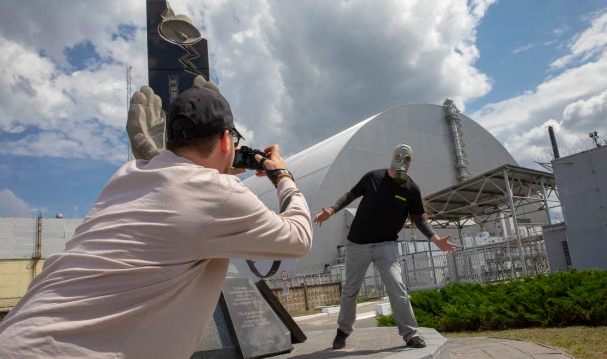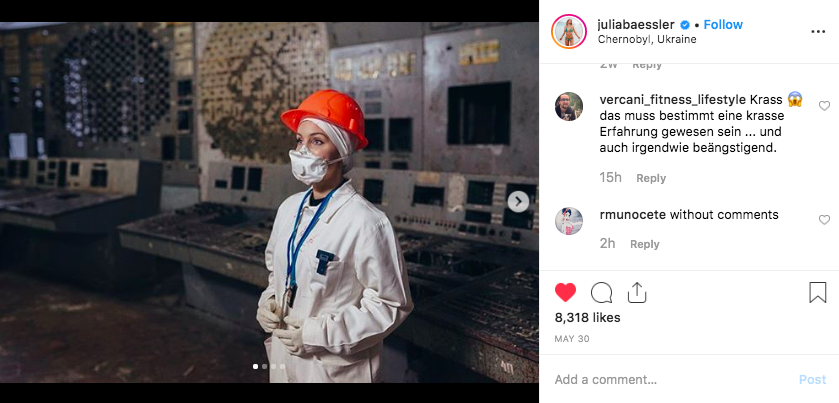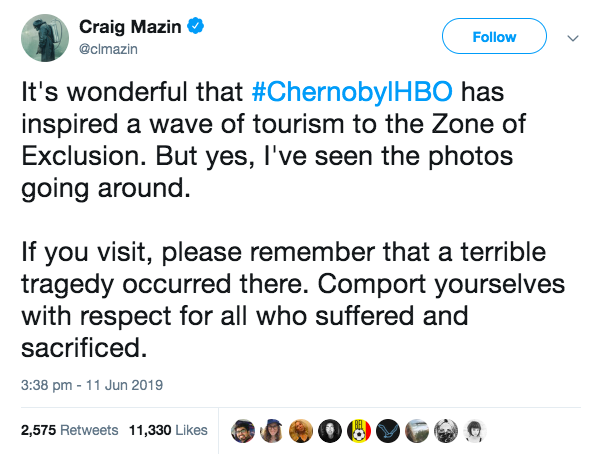It isn’t a case of whether or not to visit Chernobyl, it’s about how you do it.

Photo Credit: Simon Jones – The Sun.
Recently, news of social media influencers ‘flocking’ to the Chernobyl disaster site to snap gram-worthy content has been taking over news outlets. The reports of sexy photos shoots at the disaster site are believed to be due to the success of HBO’s Chernobyl series, which explores the 1986 nuclear disaster.

Photo Credit: Instagram.
The issue that has arisen from these posts is not a new idea in the modern world of photo sharing. Similar incidents have caused the same stir of negative attention, which sometimes accelerates itself to the level of online bullying, as noted by Julia Baessler, one of the models under fire for her photos at the Chernobyl Nuclear Power Plant. Baessler stated to Business Insider that she “didn’t come to visit Chernobyl as a tourist attraction or shooting spot because of the HBO series.” She goes on to say that she is “sick of reading this,” and explains that she received access to barred areas of the site due to her boyfriend’s career as an engineer.
“I don’t want to be seen as an influencer going to Chernobyl because it’s trendy now. That’s not true,” said Julia Baessler to Business Insider.
Other historical sites have had to act to decrease their use as the backdrop to photo shoots before. One such example is the Auschwitz Memorial in Poland, who requested that visitors refrain from taking photos to post on social media as a sign of respect to those who endured and continue to endure the aftermath of terrible historical events. It is important to note that these sites are not banning the use of photography but ask that the photos be tasteful.
A similar sentiment was expressed by HBO Chernobyl’s creator, Craig Mazin, who tweeted not to discourage the increased tourism that has resulted from the show’s release, but to request respect from those who choose to partake.

Photo Credit: Twitter.
Visiting sites such as Chernobyl is example of the rise of dark tourism, the idea of visiting historical sites associated with death or tragedy. This branch of tourism is not necessarily in and of itself a negative occurrence, it encourages people to face facts of past mistakes and encourages economic growth in these places where it may be most needed. Additionally, taking photos of these areas is not always considered a vapid or inappropriate practice – photo sharing is, after all, a massive form of communication in this day and age.
So, next time you go to take a photo at a historical site, simply judge whether the photo is focusing on the history of the area in a way that is respectful and kind. And, ah, don’t do this…

Photo Credit: Instagram.
Note: The model in this post came out to say that the photo was not taken at the actual Chernobyl site, however, backlash regarding the use of the geotag to increase traction was heavily criticised.
Subscribe to FIB’s newsletter for your weekly dose of music, fashion and pop culture news!






